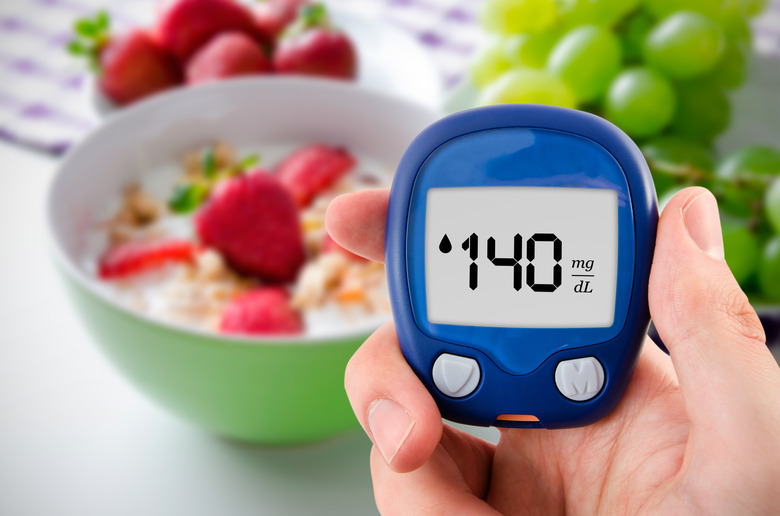What Elements Make Up Glucose?
Glucose, also called grape sugar, blood sugar or corn sugar, is among the simplest and one of the primary naturally occurring sugars. Produced naturally by plants as the primary photosynthesis product, it is heavily used by living beings as a main energy source and is necessary for cellular respiration. Chemically, it is a monosaccharide carbohydrate and serves as a building block for complex sugars like starch.
TL;DR (Too Long; Didn't Read)
Glucose is a hydrocarbon, so it contains — you guessed it — carbon and hydrogen. It also contains oxygen.
Carbon
Carbon
Carbon is the fourth most abundantly occurring element in the universe and is found in all known living things, making it the chemical foundation of known life. Every glucose molecule contains six atoms of carbon. One of those is grouped with one atom each of oxygen and hydrogen to form an aldehyde group, making glucose an aldohexose. Carbon is both a waste product and an energy source in cellular respiration occurring with glucose molecules and forms the base element in the cellular respiratory cycles of glycolysis and the subsequent Kreb's cycle in which glucose is transformed into energy. Glucose can also be transformed into other energy compounds like galactose by oxidizing a singular carbon element within the glucose molecule.
Hydrogen
Hydrogen
The lightest and the most abundantly occurring element in the universe, hydrogen accounts for nearly 3/4 of the entire universe's mass. There are 12 hydrogen atoms found in each glucose molecule. Although it does not bond well with carbon directly in its elemental form, reactions between the non-elemental forms of the two elements do form molecules containing the carbon-hydrogen bond which is found in most, if not all organic compounds–like glucose. Its high reactivity to electronegative elements, including oxygen, results in strong bonds with those elements called hydrogen bonds. Hydrogen bonds and hydrogen-carbon bonds are the basis of all carbohydrates like glucose. Hydrogen's placement in a glucose molecule is also important, as depending on its bonding sequence with carbon and oxygen, the hydrogen's placement will determine whether a glucose molecule is a "dextro" or "levo" type sugar. This is vital given that dextro glucose molecules can be metabolized and levo molecules cannot.
Oxygen
Oxygen
Oxygen is one of the building blocks of some organic compounds. It is the third most abundantly occurring element in the universe after hydrogen and helium, and is an integral part of almost all structural compounds found in living beings, including all carbohydrates. Carbohydrates like glucose account for the largest proportion of oxygen found in organic compounds. A single glucose molecule contains six oxygen atoms. The oxygen in glucose plays a vital role in aerobic respiration whereby glucose is oxidized to release energy (water and carbon dioxide are also byproducts of glucose oxidation).
References
Cite This Article
MLA
Alo, B.T.. "What Elements Make Up Glucose?" sciencing.com, https://www.sciencing.com/elements-make-up-glucose-6192652/. 25 April 2018.
APA
Alo, B.T.. (2018, April 25). What Elements Make Up Glucose?. sciencing.com. Retrieved from https://www.sciencing.com/elements-make-up-glucose-6192652/
Chicago
Alo, B.T.. What Elements Make Up Glucose? last modified March 24, 2022. https://www.sciencing.com/elements-make-up-glucose-6192652/
